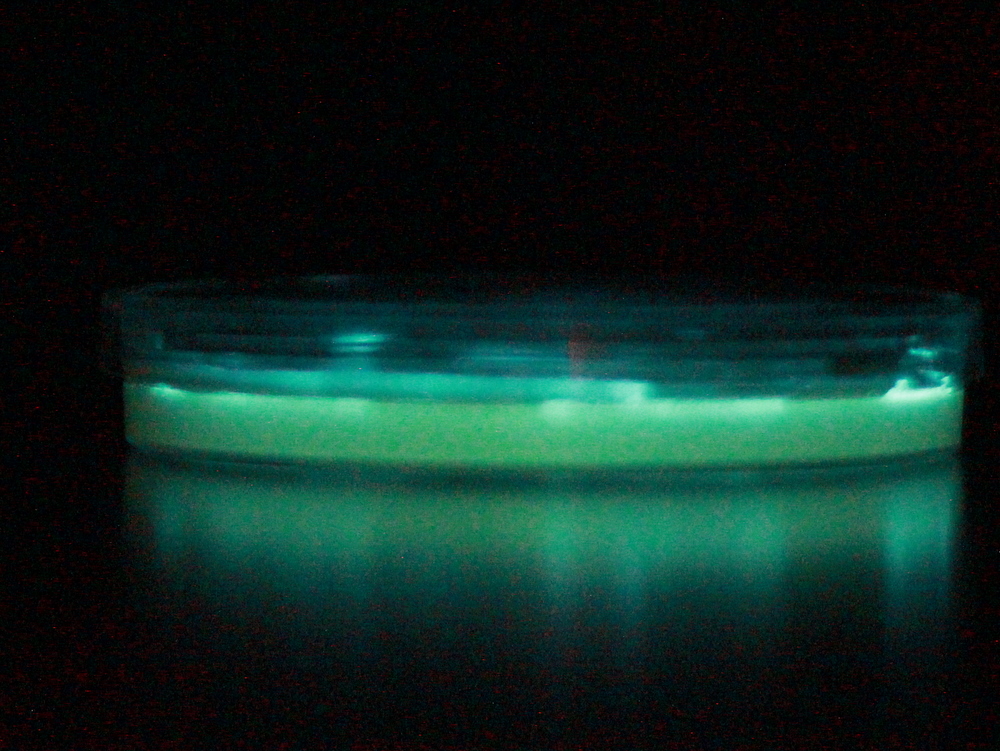Team:Cambridge/Human Practices
From 2010.igem.org
(→Bioluminescent species) |
|||
| Line 6: | Line 6: | ||
==Futures== | ==Futures== | ||
We spent a day early in the project imagining how engineered artificial bioluminescence might be used in the future. | We spent a day early in the project imagining how engineered artificial bioluminescence might be used in the future. | ||
| + | |||
| + | ==Applications== | ||
| + | Our thoughts on using biological light sources led us to consider the concept of sustainability. Would our lighting be better than conventional devices in this area? and where might it be useful? We also considered the prospect of using our light production in biosensors (after a talk from 'Practical Action'*). Coupled with a light sensor our parts could provide a bridge between biological and electrical circuits. | ||
==Knowledge Recycling== | ==Knowledge Recycling== | ||
| - | + | Sustainability considerations in end design also led us to consider the sustainability of the way we conduct our research. Do we give the ideas we have the maximum chance of being taken forward and used to promote further thought rather than being intellectual dead ends? | |
{{:Team:Cambridge/Templates/footer}} | {{:Team:Cambridge/Templates/footer}} | ||
Revision as of 17:35, 22 October 2010

Human practises encompasses the social ethical and legal considerations of our work. We imagined how our particular project might impact on peoples lives as well as thinking about the wider issues of the way we practise our science and share our findings.
Futures
We spent a day early in the project imagining how engineered artificial bioluminescence might be used in the future.
Applications
Our thoughts on using biological light sources led us to consider the concept of sustainability. Would our lighting be better than conventional devices in this area? and where might it be useful? We also considered the prospect of using our light production in biosensors (after a talk from 'Practical Action'*). Coupled with a light sensor our parts could provide a bridge between biological and electrical circuits.
Knowledge Recycling
Sustainability considerations in end design also led us to consider the sustainability of the way we conduct our research. Do we give the ideas we have the maximum chance of being taken forward and used to promote further thought rather than being intellectual dead ends?
 "
"
